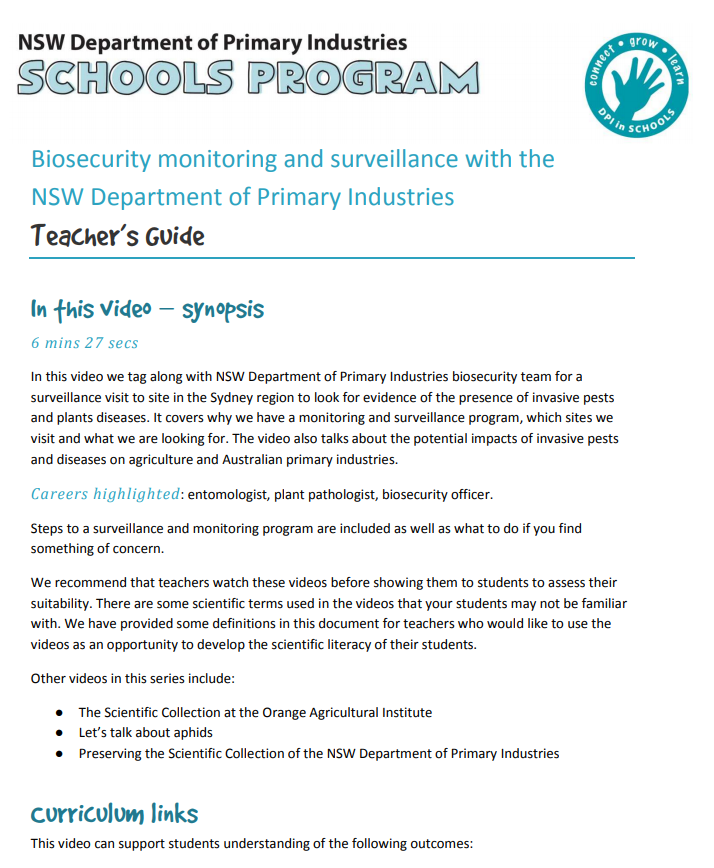How do you approach testing possible solutions to problems?
Join the NSW Department of Primary Industries biosecurity team as they undertake a surveillance visit to a site in Sydney.
During the visit the team look for evidence of the presence of invasive pests and plant diseases and explain the importance of the monitoring and surveillance program.
This is an example of testing possible solutions to problems as the team work to identify potential biosecurity risks which is critical in establishing future safety measures.
Students Learn To
- test possible solutions to problems
- use tools, materials and processes to produce a solution to an identified problem
- develop methods to communicate solutions to problems through a visual display
- conduct continual evaluations throughout the design and production of the minor project
- evaluate the project in terms of the identified criteria for success
Downloads

Biosecurity monitoring and surveillance with the NSW Department of Primary Industries - Teachers Guide
How do you approach testing possible solutions to problems?
Join the NSW Department of Primary Industries biosecurity team as they undertake a surveillance visit to a site in Sydney.
During the visit the team look for evidence of the presence of invasive pests and plant diseases and explain the importance of the monitoring and surveillance program.
This is an example of testing possible solutions to problems as the team work to identify potential biosecurity risks which is critical in establishing future safety measures.
Videos
How do you approach testing possible solutions to problems?
Join the NSW Department of Primary Industries biosecurity team as they undertake a surveillance visit to a site in Sydney.
During the visit the team look for evidence of the presence of invasive pests and plant diseases and explain the importance of the monitoring and surveillance program.
This is an example of testing possible solutions to problems as the team work to identify potential biosecurity risks which is critical in establishing future safety measures.
What tools, materials and processes can you use to produce a solution to an identified problem?
Dr Hugh Goold talks about what it means to be a synthetic biologist and his work with the Yeast 2.0 project.
Dr Goold explains what technology he uses in the lab for his work, including robots, and the processes involved to produce results. Problem solving is a major part of Dr Goold’s role as a synthetic biologist.
How can you communicate solutions to problems through a visual display?
Kim leads the Community Engagement team for the Shark Management Strategy.
In this role Kim works with scientists to learn about sharks and then creates different and engaging ways to communicate those findings with local communities and beach authorities.
Examples of how Kim aims to deliver the scientists findings and improve people’s knowledge and understanding of sharks includes a travelling shark education trailer, maps and videos.
What is the process of conducting continual evaluations throughout the design and production of a solution?
NSW DPI’s Research Agronomist Colin McMaster explains the aim, experimental design and purpose of the 2019 cover crop trial in NSW.
The aim of the project is to look at the impact of various ground covers and how that impacts soils moisture and accumulation over time.
In this video Colin explains the process of continual evaluations throughout the experiment to better broad acre cropping.

